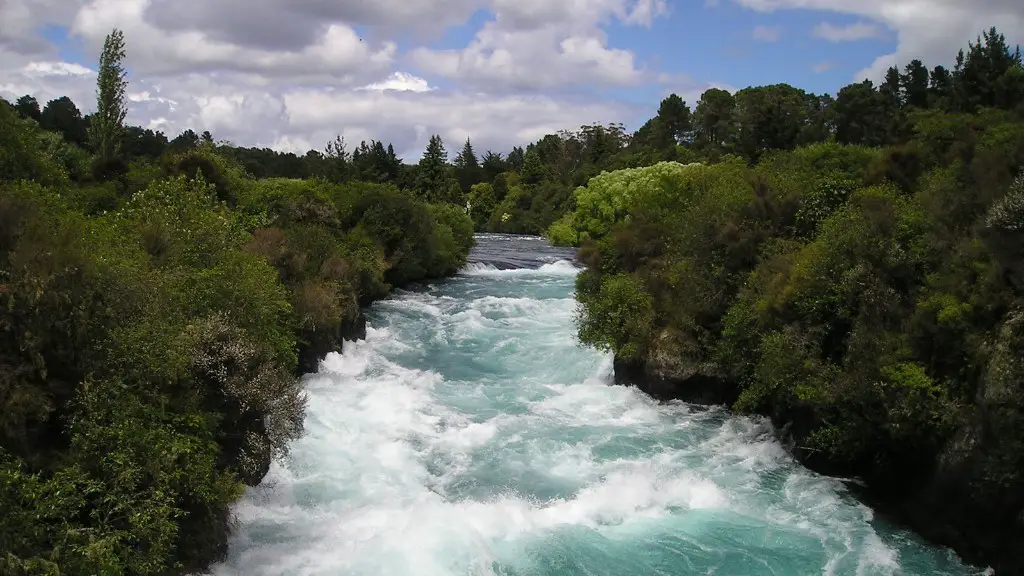Overview
The Mississippi River is one of the most crucial waterways in the United States. However, its vital role in transportation and providing water for the local ecosystems often mean that it is at risk of flooding. Since 1900, more than 2900 miles of the river (Esser, 2014) have suffered from prolonged flooding events that often resulted in considerable economic and social losses for the communities located nearby. In this article, we will look at the factors that make Mississippi River flooding so dangerous and how the danger of flooding is monitored and managed.
Risk Factors
The Mississippi River is one of the largest rivers in the world, with a length of almost 1,400 miles and a drainage basin of more than 1,250,000 square miles (Esser, 2014). Large rainfall events often result in prolonged flooding, which can cause significant damage to the environment and the communities located nearby. This is especially true for areas located close to the tributaries of the Mississippi, such as the Ohio and Missouri rivers, which often experience even more intense flooding events.
The increasing presence of impervious surfaces, such as roads and parking lots, has contributed to the risk of flooding because they accelerate the rate at which water flows into the Mississippi River. In addition, the increasing intensity of rainfall events and rapid changes in temperature, due to global climate change, mean that the Mississippi is even more likely to experience flooding.
Assessment and Management
The U.S. Army Corps of Engineers is responsible for monitoring the Mississippi River and providing warnings of potential flooding events. Advanced hydrologic models are used to track changes in the water levels and to predict the potential magnitude of flooding events. In addition, the USACE is responsible for constructing and maintaining levees and other flood-protection infrastructure along the Mississippi.
The USACE also works with local communities to develop flood-prevention strategies. These include using green infrastructure to absorb excess water and reduce the risk of flooding, developing early warning systems and evacuating people from the most at-risk areas. The USACE also works with landowners to buy out or relocate properties in the floodplain in order to reduce the potential risks of flooding.
Impacts of Flooding
Flooding is one of the most dangerous natural disasters and can cause considerable economic and social disruption. It can damage homes, businesses and public infrastructure, and lead to long-term disruption of essential services, such as electricity and communications. The costs of flooding can be enormous and can often exceed billions of dollars in direct and indirect losses.
The psychological impacts of flooding can also be severe and can often lead to depression, anxiety and stress-related disorders. The displacement of people can create considerable social disruption, as families are often separated and have to rebuild their lives in new locations. In addition, the disruption of local agriculture can have a significant economic impact on rural communities.
Manmade Structures at Risk
The risk of flooding is not confined to natural structures and ecosystems, but also includes manmade infrastructure and objects. Historically, manmade structures such as bridges, weirs and locks have been built to control the flow of the Mississippi River in order to facilitate navigation and irrigation. However, these structures can also be very vulnerable to flooding and can be damaged or destroyed if not protected properly.
In addition, most of the major industrial infrastructure located near the Mississippi River, such as power plants and chemical plants, are also at risk of flooding. If these facilities were to be destroyed, it could cause considerable damage to the local economy, as the region relies heavily on these industries for its livelihood.
Investment in Protection Structures
The risk of flooding is often exacerbated by a lack of adequate protection structures. Although the USACE is responsible for constructing and maintaining flood-protection infrastructure, there is often not enough funding to adequately protect the entire Mississippi River basin. This has been particularly problematic in recent years, as stretched budgets have meant that flood-protection projects have been prioritized according to risk levels and other factors.
In order to reduce the risks of flooding, the federal government should focus on increasing investment in protection infrastructure. This could include investing in better levee systems, improved flood warning systems and advanced hydrologic models to help identify and mitigate potential risks.
Future Predictions
Several scientific studies have been conducted to predict the potential risk of flooding for the Mississippi River. Models created by the USACE suggest that the risk of flooding is likely to increase in the future, with more frequent and more intense flooding events (Esser, 2014). This could be due to several factors, including increasing intensity of rainfall events, increasing impervious surfaces and rising sea levels due to global climate change.
The USACE is currently working to identify at-risk areas and potential mitigation measures, such as the relocation of properties located in the floodplain. However, it is clear that more needs to be done to reduce the risks of Mississippi River flooding and to protect local communities and infrastructure from the effects of flooding.
Effects on Local Biodiversity
Flooding can have significant impacts on local ecosystems, with reduced water levels leading to a loss of habitat for many species. The Mississippi River is home to an incredible range of aquatic species, including several endangered fish species, and any significant disruption to the water levels can have drastic consequences for biodiversity.
In addition, flooding can cause increased levels of water pollution and nutrients, which can decrease the water quality and lead to algal blooms. This can create a range of problems, from decreased oxygen levels to an increase in toxic substances, which can in turn have a significant impact on local biodiversity.
Habitat Protection Strategies
In order to reduce the impacts of flooding on local biodiversity, there are a range of strategies that can be employed. One option is to create flood-proof habitats that are protected from the effects of flooding. This could include the construction of levees, berms and other flood-protection infrastructure that can be used to protect sensitive habitats.
In addition, the USACE collaborates with local communities and conservation organizations to develop habitat restoration and conservation programs. These programs often involve activities such as replanting wetlands and restoring riparian habitats, which can help improve water quality and protect species from the effects of flooding.
Industry Response to Flooding
Industrial and agricultural activities located close to the river are also at risk of flooding and must take steps to protect themselves from the effects of flooding. This may include the relocation of critical infrastructure or the development of emergency plans to limit any disruption to normal operations.
In addition, some industries have responded to flooding by investing in “green” infrastructure, such as rain gardens and permeable pavements, which can help reduce the risk of flooding by absorbing excess water. This has the added benefit of improving water quality, as the rainwater is absorbed more slowly and allowed to percolate into the ground.
Citizen Response to Flooding
Individuals can also take steps to reduce their risk from flooding. This can involve taking simple steps such as clearing gutters and drains, raising electrical systems and securing valuable items, to more complex measures such as obtaining adequate insurance coverage or developing personal evacuation plans.
In addition, citizens can play an important role in helping to reduce the risk of flooding by working with their local communities to identify and report any potential risks. This includes reporting any problems with drainage systems or flooding-prone areas, and making sure that warning signs and evacuation notices are followed.
Flood Resilient Building Strategies
The construction of flood-proof buildings is an important part of reducing the risk of flooding. Buildings located in the floodplain should be designed to withstand the effects of flooding and should include measures such as elevated foundations and flood-resistant construction materials.
In addition, buildings that are located close to the Mississippi River should be designed to be as energy-efficient as possible. This can include using energy-efficient windows and doors, as well as rainwater-harvesting systems and solar-powered appliances.
Local Ordinances and Regulations
Local ordinances and regulations can play an important role in reducing the risk of flooding. This includes rules on construction and land-use, such as the protection of wetlands and floodplains, the designation of high-risk areas and the development of green infrastructure.
In addition, local communities can also develop zoning ordinances that require builders to take additional steps to protect their properties from flooding, such as the installation of an elevated foundation or the use of flood-resistant construction materials. This can help protect communities from the effects of flooding, as well as reducing the risk of property damage and economic losses.



